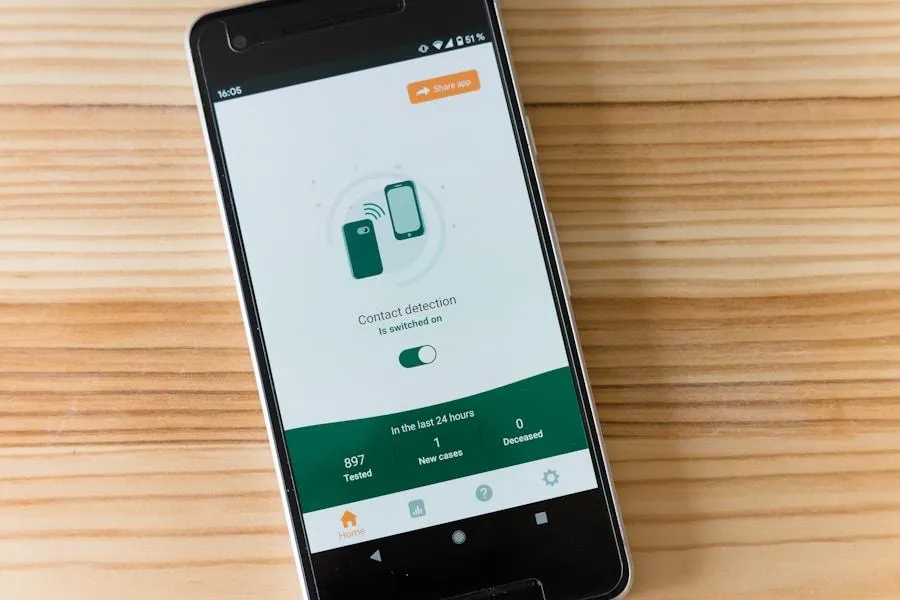THE GROWTH STRATEGIST VAULT
Insights to Turn Automation into Advantage
Learn how to identify inefficiencies, map opportunities, and design
AI solutions that deliver measurable returns.
Think Like a Strategist. Build Like a Pro

Customer Loyalty 101: Essential Strategies Every Business Should Know
Customer Loyalty 101: Essential Strategies Every Business Should Know
Understanding the customer journey is crucial for any business looking to retain customers and build long-term relationships. The customer journey refers to the entire process that a customer goes through from the initial awareness of a product or service to the final purchase and beyond. By understanding the customer journey, businesses can identify pain points, preferences, and opportunities to engage with customers at every stage of their interaction with the brand.
One way to understand the customer journey is by creating customer personas, which are fictional representations of the ideal customers based on research and data. These personas can help businesses understand the needs, motivations, and behaviors of their target audience, allowing them to tailor their marketing and customer service efforts accordingly. Additionally, businesses can use tools such as customer journey mapping to visualize and analyze the various touchpoints and interactions that customers have with the brand. By gaining insights into the customer journey, businesses can better anticipate and meet the needs of their customers, ultimately leading to improved customer retention and loyalty.
Understanding the customer journey also involves gathering and analyzing customer feedback and data. By collecting feedback through surveys, reviews, and social media, businesses can gain valuable insights into the customer experience and identify areas for improvement. Additionally, analyzing data such as purchase history, browsing behavior, and demographic information can help businesses understand their customers' preferences and tailor their offerings to better meet their needs. By continuously monitoring and analyzing the customer journey, businesses can adapt and evolve their strategies to better serve their customers and drive long-term loyalty.
Creating personalized experiences
Creating personalized experiences is a key strategy for retaining customers and building strong relationships with them. Personalization involves tailoring products, services, and communications to meet the specific needs and preferences of individual customers. By personalizing the customer experience, businesses can make customers feel valued and understood, ultimately leading to increased satisfaction and loyalty.
One way to create personalized experiences is by leveraging customer data to deliver targeted and relevant content. By analyzing customer data such as purchase history, browsing behavior, and demographic information, businesses can segment their customers into different groups and deliver personalized recommendations, promotions, and communications. For example, an e-commerce retailer can use purchase history to recommend products that are similar to ones that a customer has previously purchased, while a travel company can use demographic information to offer personalized vacation packages based on a customer's interests and preferences.
Another way to create personalized experiences is by offering customizable products or services. For example, a clothing retailer can offer personalized sizing options or customization features that allow customers to design their own products. Similarly, a software company can offer customizable features or add-ons that allow customers to tailor the product to their specific needs. By offering personalized options, businesses can cater to the unique preferences of individual customers and create a more engaging and memorable experience.
Rewarding loyal customers
Rewarding loyal customers is an effective way to incentivize repeat purchases and build long-term relationships with customers. By recognizing and rewarding loyal customers, businesses can show appreciation for their support and encourage them to continue engaging with the brand.
One way to reward loyal customers is through loyalty programs, which offer incentives such as discounts, exclusive offers, and rewards points for repeat purchases. By joining a loyalty program, customers can earn points or rewards for every purchase they make, which they can then redeem for discounts or free products in the future. Loyalty programs not only incentivize repeat purchases but also create a sense of exclusivity and belonging for members, ultimately fostering stronger relationships with the brand.
Another way to reward loyal customers is through personalized offers and promotions. By analyzing customer data and purchase history, businesses can identify their most loyal customers and offer them exclusive discounts or promotions tailored to their preferences. For example, a beauty retailer can offer a loyal customer a personalized discount on their favorite skincare products, while a restaurant can offer a loyal customer a complimentary dessert on their next visit. By offering personalized rewards, businesses can show appreciation for their loyal customers in a meaningful and memorable way.
Providing exceptional customer service
Providing exceptional customer service is essential for retaining customers and building a positive brand reputation. Exceptional customer service involves going above and beyond to meet the needs of customers and exceed their expectations at every touchpoint.
One way to provide exceptional customer service is by offering proactive support and assistance. Instead of waiting for customers to reach out with questions or issues, businesses can anticipate their needs and provide proactive support through channels such as live chat, social media, or email. By being proactive in addressing customer needs, businesses can demonstrate their commitment to customer satisfaction and build trust with their customers.
Another way to provide exceptional customer service is by empowering employees to make decisions and take ownership of customer interactions. By giving employees the authority to resolve issues and make decisions on behalf of the company, businesses can ensure that customers receive timely and effective solutions to their problems. Additionally, empowering employees to take ownership of customer interactions can lead to more personalized and empathetic service, ultimately creating a more positive experience for customers.
Building a strong brand identity
Building a strong brand identity is crucial for retaining customers and differentiating a business from its competitors. A strong brand identity encompasses the values, personality, and visual elements that define a brand and resonate with its target audience.
One way to build a strong brand identity is by defining and communicating a clear brand purpose and values. By articulating what the brand stands for and what it believes in, businesses can connect with customers on a deeper level and build emotional connections with them. For example, a sustainable fashion brand can communicate its commitment to ethical production practices and environmental responsibility, resonating with environmentally conscious consumers who share similar values.
Another way to build a strong brand identity is by creating consistent visual elements that reflect the brand's personality and values. This includes elements such as logos, color schemes, typography, and imagery that are used across all marketing materials and touchpoints. By maintaining consistency in visual elements, businesses can create a cohesive and recognizable brand identity that resonates with customers and reinforces brand recognition.
Encouraging customer feedback
Encouraging customer feedback is essential for understanding the needs and preferences of customers and continuously improving the customer experience. By gathering feedback from customers, businesses can gain valuable insights into areas for improvement and identify opportunities to better meet the needs of their target audience.
One way to encourage customer feedback is by actively soliciting reviews and testimonials from satisfied customers. Businesses can ask customers to leave reviews on platforms such as Google My Business, Yelp, or social media, or send follow-up emails requesting feedback after a purchase or interaction with the brand. Positive reviews not only provide social proof for potential customers but also offer valuable insights into what customers appreciate about the brand.
Another way to encourage customer feedback is by creating opportunities for open communication and dialogue with customers. This can include channels such as live chat support, social media engagement, or feedback forms on the company website. By providing accessible channels for customers to share their thoughts and experiences, businesses can demonstrate their commitment to listening to customer feedback and improving the customer experience based on their input.
Leveraging technology for customer retention
Leveraging technology is crucial for effectively retaining customers in today's digital age. Technology offers numerous tools and platforms that businesses can use to engage with customers, personalize their experiences, and streamline processes for improved retention.
One way to leverage technology for customer retention is through the use of customer relationship management (CRM) systems. CRM systems allow businesses to store and manage customer data in one centralized platform, enabling them to track interactions with customers, analyze data for insights into customer behavior, and personalize communications based on individual preferences. By leveraging CRM systems, businesses can better understand their customers' needs and tailor their strategies for improved retention.
Another way to leverage technology for customer retention is through the use of marketing automation tools. Marketing automation allows businesses to streamline repetitive tasks such as email marketing, social media posting, and lead nurturing, freeing up time for more personalized interactions with customers. By automating certain aspects of the customer journey, businesses can ensure consistent communication with customers while also freeing up resources to focus on more strategic initiatives for retention.
In conclusion, understanding the customer journey is essential for building long-term relationships with customers. By creating personalized experiences, rewarding loyal customers, providing exceptional customer service, building a strong brand identity, encouraging customer feedback, and leveraging technology for retention, businesses can effectively retain customers and drive long-term loyalty. By continuously adapting strategies based on insights into the customer journey, businesses can ensure that they are meeting the evolving needs of their target audience while also differentiating themselves from competitors in an increasingly competitive marketplace.
Advice and answers from our team.
Asked Questions (FAQ's)
What is an AI Opportunity Audit?
An AI Opportunity Audit is a two-week process where we analyze your workflows, identify inefficiencies, and reveal automation opportunities that can save time, reduce costs, and unlock new revenue streams.
Who is this service for?
Our consulting is tailored for professional services providers, like Financial Advisory firms, Tax Advisory firms, Real Estate Brokerages, & Commercial Services firms who want to scale faster, reduce repetitive work, and get clarity on where AI can bring the biggest impact.
Do you implement the recommended solutions after our AI Opportunity Audit?
Yes. After the audit, we provide a clear implementation roadmap. We can either support your team in executing it or manage the full automation build for you.
Can you prove my ROI
Yes! We use a simple but powerful ROI model that translates hours saved into annual cost savings and potential revenue gains. You'll see the numbers before making any investment.
How long does it take to see results after our AI Opportunity Audit?
We combine deep technical expertise (n8n Ambassador, full-stack development) with hands-on Project Management experience building and integrating automations for agencies and firms worldwide. No fluff—just results.
Are You Ready To
Transform Your Business?
3 Tools to Clarify Your ROI

Workbook:
Identify bottlenecks in your current processes.

Calculator:
Quantify savings and measure ROI in minutes.

Canvas:
Visualize opportunities and the path to reach them
Much more than workflows, you get clear proven data. You'll see how every recommendation is backed by measurable ROI so you know exactly why it matters, and how to get there.
0% Risk | 100% Value

We focus on the relationships
As Much As The Results
"I'm facing some things that I'm too busy to
face, but I need to face them!"
Jade N.

"Within 5 minutes of talking with Joseph you will have that confidence that you're wanting."
Mark J.


1st Shield Financial
"His knowledge and client-focused approach demonstratively delivered excellence for outstanding results."
Kim B.


360 Property Group
"He is a valuable asset for any team, he embodies the qualities of a dedicated and caring professional. I surely look forward to doing more work with him in the future!"
Mack H.

"You've done everything you said...
You instill confidence in me"
Marco B.

"It feels personal. It doesn't feel like we're
just another client"
Michael H.


Gold Harvest Group
"Working with Joseph was a breath of fresh air into the noise of marketing. He asked great questions to really get to know who I am and what my business does."
Roman L.


Symmetry Financial
I now have a team that is setting appointments for me and getting great traction to my website."
Shonda S.


Innovation
Fresh, creative solutions.

Integrity
Honesty and transparency.

Excellence
Top-notch services.
FOLLOW US
Copyright 2025. J.W. Crawford Management. All Rights Reserved.

